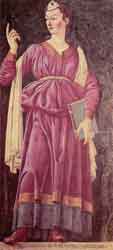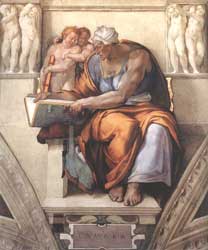.
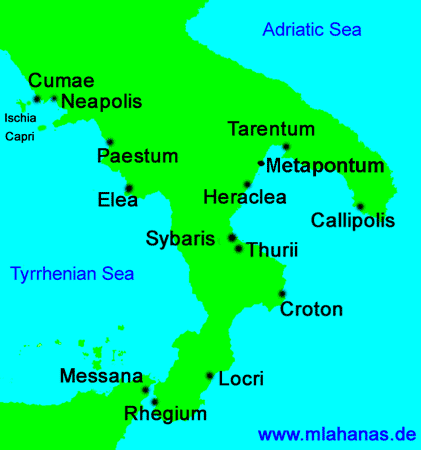
Cumae (Cuma, in Italian) is an ancient Greek settlement lying to the northwest of Naples in the Italian region of Campania. The settlement is believed to have been founded in the 8th century BC (around 740 BC) by Greeks from the city of Cuma and Chalkis in Euboea upon the earlier dwellings of indigenous, Iron-Age peoples who they supplanted. Eusebius placed Cumae's Greek foundation at 1050 BC. Its name comes from the Greek word Kymé, meaning wave - perhaps in reference to the wavelike shape of the peninsula of Cuma in Euboea.
There is also a small, modern Greek Euboean city called Kyme (Kύμη) as well as an excavated ancient Greek city of Cuma, the source point for the Cumae alphabet.
Cumae was the first Greek colony on the mainland of Italy (Magna Graecia), there having been earlier starts on the islands of Ischia and Sicily by colonists from the Euboean cities of Chalcis (Χαλκίς) and possibly Eretria (Ερέτρια) or Cuma (Kύμη).
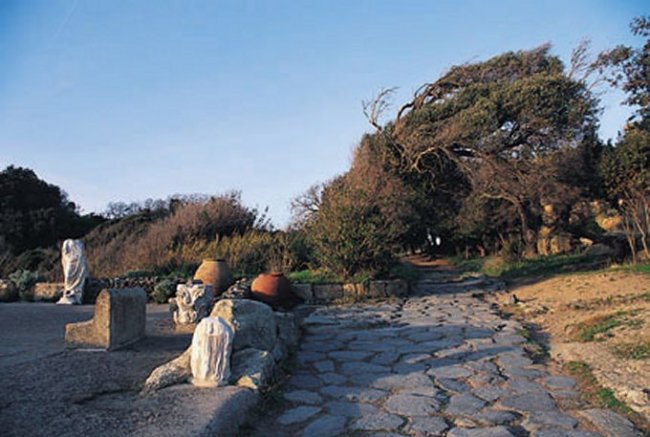
Ancient ruins of Cumae [Source]
Cumae is perhaps most famous as the seat of the Cumaean Sibyl. Her sanctuary is now open to the public. The colony was also the entry point onto the Italian peninsula for the Cumean alphabet, a variant of which was adapted by the Romans.
The Cumaen colony spread throughout the area over the 6th and 7th centuries BC, gaining sway over Puteoli and Miseno and, thereafter, the founding of Neapolis in 470 BC.
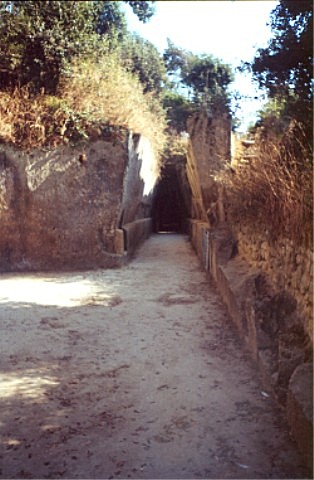
Entrance of the Sibyl grotto of Cumae [Source] Steering to Cumae, where the Sibyl dwells, Aeneas seeks her cave, whose entrance is barred by bronzen gates, on which is represented the story of Daedalus,--the first bird man,--who, escaping from the Labyrinth at Crete, gratefully laid his wings on this altar. We are further informed that the Sibyl generally wrote her oracles on separate oak leaves, which were set in due order in her cave, but which the wind, as soon as the doors opened, scattered or jumbled together, so that most of her predictions proved unintelligible to those who visited her shrine. Description of the Aeneid, Book 6 (Helene A. Guerber)
|
Michelangelo's rendering of the Sibyl of Cumae |
The Sibyl was said to inhabit a cave with one hundred mouths, each of which had a voice [1] accessible by a still existing dromos. The Cave is a trapezoidal dromos or passage over 131 meters long running parallel to the side of the hill and cut out of the volcanic stone. The Cave of the Sibyl was rediscovered in May 1932 by Amedeo Maiuri.
The growing power of the Cumaen Greeks, lead many indigenous tribes of the region, notably the Dauni and Auraunci with the leadership of the Capuan Etruscans. This coalition was defeated by the Cumaens in 524 BC under the direction of Aristodemus. The combined fleets of Cumae and Syracuse defeated the Etruscans at the Battle of Cumae in 474 BC.
Tarquin II, the last King of Rome, lived his life in exile at Cumae after the establishment of the Roman Republic.
Cumae was also a place where a widely influential early Christian work The Shepherd of Hermas was said to have been inspired by way of visions.
The colony was built on a large rise, the seaward side of which was used as a bunker and gun emplacement by the Germans during World War II.
In Roman mythology, there is an entrance to the underworld located at Avernus, a crater near Cumae, and was the route Aeneas used to descend to the Underworld.
| Ancient Greece
Science, Technology , Medicine , Warfare, , Biographies , Life , Cities/Places/Maps , Arts , Literature , Philosophy ,Olympics, Mythology , History , Images Medieval Greece / Byzantine Empire Science, Technology, Arts, , Warfare , Literature, Biographies, Icons, History Modern Greece Cities, Islands, Regions, Fauna/Flora ,Biographies , History , Warfare, Science/Technology, Literature, Music , Arts , Film/Actors , Sport , Fashion --- |
Retrieved from "http://en.wikipedia.org/"
All text is available under the terms of the GNU Free Documentation License


